Grafting Chestnut on an Oak rootstock
Hi,
I have a Chestnut tree grown from seed. Chestnuts cannot tolerate alkalinity and that is a big problem where I live (Jerusalem).
the soil around here is full of Chalck an Dolomite and has a very high Ph.
As a result of that the tap water Ph is almost 8 and that is enough to kill a Chestnut by irrigation only, even if the soil is acidic.
right now my Chestnut grow in a pot with acidic soil and distilled water irrigation.
i know Chestnuts can be grafted successfully on many species of Oaks and that may be the only way to plant a Chestnut in the rocky alkaline ground. many Oak species thrive around here, the most common species are Quercus ithaburensis and Quercus boissieri which are native and also Quercus robur that is relatively new in this area but grows well.
Do anybody have an experience grafting Chestnut of those species? except the three listed above, many other Oaks grow here and if there are some specific species of oaks that are more compatible as a rootstock I would love to know about them.
Also, there is that method of grafting called Nutgrafting (photo attached below) and I wonder if it can be applied on acorns rather than Chestnus?
thankes!
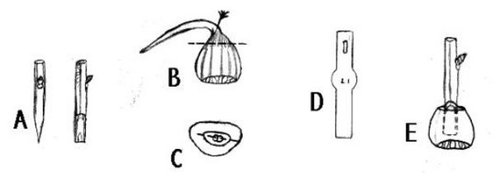
Comments (32)
Smivies (Ontario - 5b)
9 years agoHow does that nut grafting work? You've chopped off the radicle (root tip) and replaced it with a scion. Where do the roots grow from now?
I've often wondered if intolerance of alkaline soils was a plant physiology thing (requirement for nutrients or specific forms of nutrients), or a root structure thing (ability to extract nutrients from the soil)? Don't have an answer for you.
cumulus_nimbus
Original Author9 years agoThe grafted scion should stimulate root growth from the nut after the growing tip containing the root and the leaf was removed.
more detail here:
http://www.qdma.com/forums/showthread.php?t=58645about the roots and soil Ph: I know there are species that cannot adsorb nutrients in high Ph enviorment unless they have a specific fungi living in mycorrhiza with their roots (Arbutus andrachne for example) but I don't know if that is the case for all plants.
Related Professionals
Jennings Landscape Architects & Landscape Designers · Canton Landscape Contractors · Apollo Beach Landscape Contractors · Cambridge Landscape Contractors · Essex Landscape Contractors · Plymouth Landscape Contractors · San Pedro Landscape Contractors · Wailuku Landscape Contractors · Riverside Siding & Exteriors · Boise Decks, Patios & Outdoor Enclosures · Hot Springs Village Decks, Patios & Outdoor Enclosures · Lancaster Decks, Patios & Outdoor Enclosures · Myrtle Beach Decks, Patios & Outdoor Enclosures · Santa Ana Decks, Patios & Outdoor Enclosures · Truckee Decks, Patios & Outdoor Enclosuresjocelynpei
9 years agoI have done oak nut grafting, with oak scions only. it works the same as chestnut. I have no idea if the species of oak you have listed will do for stocks. There was a poster to this form who lives in Lebanon or close by, who has living grafts on local oaks.
Perhaps he will see this post and reply. If not, I'll try some of the chestnut formums and see if he knows.
jocelynpei
9 years agoThis one is an oak scion on an acorn. it is already started, but is done the same way as the previous one.
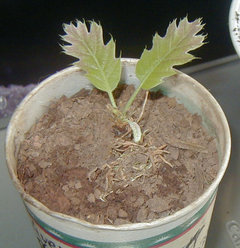
cumulus_nimbus
Original Author9 years agoSuch good news to realize it is possible with acorns. you have no idea how long I've been searching for that! :)
can you tell more details about that please?
which species of Oak scion and Chestnut did you use?, Have you done the grafting following the same instructions linked above? and what is the percentage of successful Oak-Chestnuts grafts?Is this some kind of a red Oak in the second photo?
jocelynpei
9 years agoYes, red oak in the second photo. The grafts on red oaks are not that long lived, and the fellow in lebanon uses white oaks and has better lifespan than I do on red oaks. I live close to a bog, so I wrap the new nut graft in peatmoss, the live green moss itself, and then pot up the whole thing with the cut surface of the nut well covered in the moss. The moss prevents it drying out till it heals. The long term survival is poor, 10 percent or so, but the short term is about 1/2 of them. Try googling 'chestnut grafts on oak' and 'chestnut forums' in your search terms and you should find the species the fellow in Lebanon uses. If you have access to parafilm you could also try inverted radicle grafting too, where you cleft graft into the slightly upturned root of an oak. I'll draw it for you and include it.
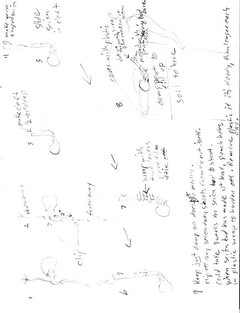
jocelynpei
9 years agoThe fellow in Lebanon uses evergreen oaks. He cuts the scions from the chestnuts just before the buds swell and wraps them in damp paper towel and pops them in the fridge till the oaks start to wake up. The oaks are slower than the chestnuts. He has some several meters high. There is reportedly a chestnut on a local white oak in California, in the USA. I have never seen it, just heard of it.....I'm in Canada.
du_pouget
8 years agoGrafting a chestnut tree on an evergreen oak tree brings the additional problem of grafting a tree that looses its leaves at autumn onto a tree that keeps its leaves all year long. This marriage happens not to last very long even if the graft starts to grow.
If there are local oaks around Jerusalem, it would be preferable to try on them. If this does not work, then you could try first grafting a red oak (we call this quercus rubra : "oak of America" in France) onto the local oak and then you can graft chestnut onto that red oak. i.e you use the red oak as an intermediate. You can see on the French site www.greffer.net and you go to "Chataigniers = chestnut tree and then "greffe de chataignier sur chêne" (there are 23 pages, unfortunately for you, it's in French !) some photos of a few very old trees (not with red oaks, this is a new idea as they grow much faster than others during the first years)
Red oak would not like alkaline soils but some people graft it easily on other oaks.
I do not understand why this well established graft has not developed as it was originally designed to produce chestnut in alkaline soils.
I have made trials early June this year of grafting "Dorée de Lyon" chestnut cultivar onto red oaks and it seems to start vigorously. After one month, the welding was hard & perfect & the buds are inflating. No need of keeping anything into the frig, but you need parafilm.du_pouget
8 years agoHere, no problem of pollinisation, there are thousands of wild chestnuts in the forests close to here (used to make pegs to keep the cows cattles).
In case you want to produce chestnuts, you would choose the cultivar you want to produce + one or several of its favorite pollinisator that you would place on the side of dominant winds.
Jocelin, you say that you had "short lived success" with red oaks. How long was it and did you graft on acorns only or did you try also on already well rooted/established young trees. ?
It's very strange that this association oak/chestnut be so poorly documented, because these are very common trees and grafting techniques were already well known at Roman time, i.e 2000 years ago. I presume that this graft is very capricious as there are only a very few examples of old trees in various countries. People who did them maybe tried tenths of grafts and it's only a single one that happened to be succesfull.
lucky_p
8 years agojocelyn,
I would anticipate that Q.rubra on Q.alba understock would be short-lived, if it even 'took' at all; they are in different sections of the genus Quercus.... the Q.rubra interstem might well be the reason for chestnut graft failure.
Your recommendation of carrying a potted chestnut to a site to provide pollenation seems unlikely to me... have you done it? I would think that a grafted tree large enough to provide adequate pollenation to another would be far too large to be growing in a pot small enough to be carried by anything other than a large tractor or forklift.
jocelynpei
8 years agoLucky, a grafted tree may produce flowers the first year. I know that sounds unlikely, but some do. Others might be 3 feet high, a meter, before they bloom, and I can still carry that. You need to make the graft from a mature tree and just hope for the best. I might be able to find you a picture on line and link to it...just leave that with me for a little while and I'll repost if I find one. It is the potted tree that usually sets the nuts, on the isolated tree's pollen. Other folks cut a flowering branch and carry it, in water, to the tree they want nuts from, then tie the bottle with the catkin bearing branch to a bur bearing branch on the mother tree. It can be pretty easy, just look for a way you can carry a piece small enough. PEI, eastern Canada, is at the northern limit of chestnut, so there are quite a few single trees. du-puget, glad you have many chestnuts. grin,. I wish I did. It gets cold here sometimes while the catkins are blooming, and they never stick their anthers out if they get cold damaged. Plus 4, degrees C will do them in, sigh. Chinese trees are more easily cold damaged in the catkin than American ones, I don't think the one behind the barn will pop out anthers this year. Nice big catkins, lumps where the anthers are expected, but I don't think they will pop out this year.
Some years they do, some it's too cold when they are forming.
For some reason, chestnut will take on Q rubra, but only for 3 or 4 leafs, the 4th winter usually does them in. Still, grafted on even a related chestnut, they may not last either. The photo is of cold damaged catkins on a mostly American tree.
jocelynpei
8 years agoFound a link for you of flowering nut grafts.
http://www.accf-online.org/chestnut/nutgrafting.htm
I'll hope for catkins with anthers and if I get any next week, I'll take you a picture of a bottled catkin bearing branch tied into a bur bearing tree.
As the catkins are not elongating much, I think they are cold damaged and may abort.....but time will tell.du_pouget
8 years agoThere's a misunderstanding, I do not suggest at all to carry a potted chestnut but to plant its favourite pollenator as well.
Catkins never freeze here, chestnut trees are very late.
If you get regularly this problem, you have to find a very very late cultivar.jocelynpei
8 years agoThe potted pollinator is for isolated trees where the landowner does not want a second tree, but some tree nut (like me) wants seednuts off that tree to increase genetic diversity. We do not get the gulf stream here in eastern Canada, so there is NO cultivar late enough. American chestnut is on the endangered species list, so folks are trying to breed from all available surviving trees. Some trees are too far north for reliable flowering every year, but can set seed SOME years. Because of blight, those northern trees are a refugia for the species, a place where there is no blight at present, but where some genetic diversity still exists. Many grafted chestnuts are not hardy enough for here, it is not really an industry here, but a last ditch effort to save the pure species. Does that explain enough?
du_pouget
8 years agoYes, I understand. Grafting on an oaktree does not seem to be the answer to your problem of conservation, this graft never survives more than two or three years, except very few trees, worldwide, that you can count with fingers of one hand only.
du_pouget
8 years agoThis is the link to see the old tree : chestnut grafted on oak (probably quercus petrea), in Sarthe (South of Normandy).
http://krapooarboricole.wordpress.com/2010/04/25/chene-chataignier-saint-mars-doutille-sarthe/
Jocelyn, how long did your graft of chestnut on red oak last ? Several months, several years ? I can't find anything about that graft duration on the net. Most probably, a lot of experiments have been done in America on this native oak.jocelynpei
8 years agoUmm, one growing season, I think. They flushed, grew about 20 cm and looked healthy, but there was a bad winter that year and I lost all of them. I lost some chestnut seedlings too, and a sweet cherry, umm, a couple of peaches too, that year. The grafts were on a 16 year old sapling. There is really no reason, except curiosity, to try them on oaks here, as the soil is already suited to chestnut. Some folks quite a bit west of me try them on Chinese chestnut, as it will take sweet soils better than American chestnut. Dentatas MUST have sour soils, acid pH.
cumulus_nimbus
Original Author8 years agoI'm glad to see this thread came back alive :)
a few thighs about your latest comments:
I don't exactly understand where did the idea of using red oak as a rootstock came from. aren't all successful chestnut-oak grafts we know about done with white oaks?
and if red oaks usually don't live many years why do you suggest using them?
I didn't know red oaks have problems with soil alkalinity, as far as I know red oaks grow here only at the botanical garden, Q.buckleyi and Q.shumardii grow in a very alkaline rocky soil and seem to do just fine.
here are some pics of them from last fall: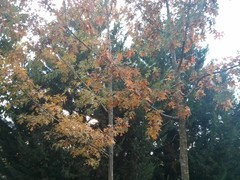 on the other hand,
on the other hand,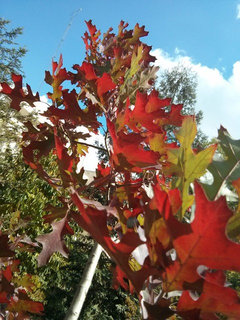
A small European chestnut tree (the only one I know of in Jerusalem except my seedlings) grow at the same garden in the same soil and the signs of stress were very clear: chlorisis and death of leaves. the photo was taken last fall and the tree died totally by spring.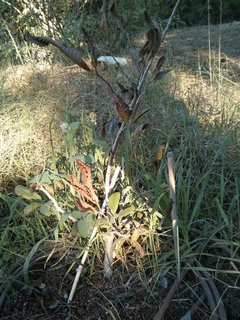
jocelynpei
8 years agoI don't know either. Some folks with sweet soil (high pH) have tried it, and I heard of that and tried the graft out of curiosity. I then had a really bad winter and lost all sorts of stuff, even grafts on chestnut in the porch...too cold. Try it on whatever you can, and let us all know if any work.
cumulus_nimbus
Original Author8 years agoAbout the Nutgrafts:
last fall, I went to that botanical garden and took acorns from many different species of oak.
At the end of last winter I have done some "Acorn grafting" . Unfortunately, I used the only optional scion around (which is the one in the photo above) before knowing it is not gonna wake up this spring, so that even if the graft would suppose to take, the scion was already in a process of dying.
However, part of those acorns grew stubs and roots 3-5 weeks after grafting.
here's a Quercus pedunculifolia acorn with the new growth starting to appear :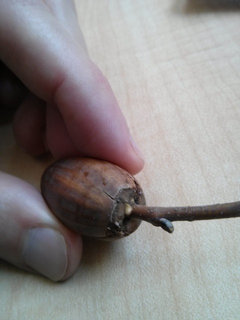
developed roots: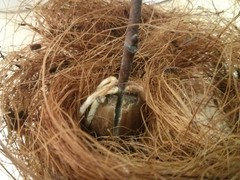
cumulus_nimbus
Original Author8 years agoApproach grafting:
as I wrote above, I started many Acorns and Chestnut seeds (European and Chinese) last spring. I've read some about this technique and realized it is probably the optimal one to use with species that are not fully compatible.
some mysterious disease attacked almost all of the European, and some of the Chinese chestnuts. I am still not sure what it is, looks like Phytophthora although over watering is usually the cause to Phytophthora and my seedlings were not over watered
If anybody has an idea what can that be i'd love to know please.cumulus_nimbus
Original Author8 years agolast modified: 8 years agoAnyways...
only one European chestnut seedling that is not infected at all left. actually tow because it has tow main shoots.
2-4 months have passed since the grafts were done and most of them showed healing of the section without any connecting tissue appearing between them.
the only tow grafts that show signs of connection are those tow shoots of uninfected europen chestnut, one of them is grafted with a native oak (Quercus ithaburensis) and the other with chestnut leaved oak (Q.casteneifolia).
here is the first graft a few months ago: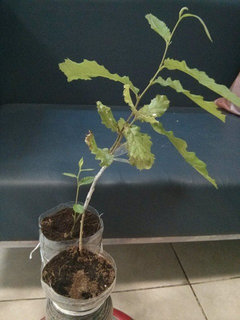
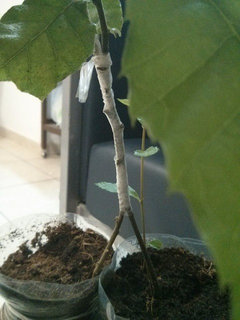
cumulus_nimbus
Original Author8 years agolast modified: 8 years agoafter about 2 months I removed part of the plastic and this is how it looked like:

and tow more months after that:
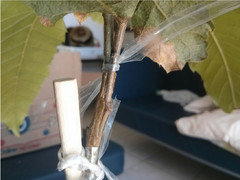
the plan is to wait until next spring and then use that chestnut as a scion for as many acorns as possible and then disconnect the chestnut from the base and to pray hard the graft will take...jocelynpei
8 years agoThe best of luck. Sometimes things are not supposed to work, every once in a while, they do. It's not repeatable, so could be due to state of both stock and scion, plain luck, who knows :) Keep trying and let us know if stuff works. I like the idea of approach grafting too, and don't be TOO quick to sever the link.
du_pouget
8 years agoThis is a link (in English) of scientific trials made in Turkey of grafting chestnut on Quercus Vulcania Boiss that they say to be very common in Anatolia & Lebanon. Jerusalem is not so far, do you have this species in Israel ?
They report trees having lived from 1893 to 1946 so it's rather durable. They report also that two rejection periods due to problems of compatibility do exist : an early one during the first two years an a later one during 5th to 7th year. So patience & resignation are needed.
You were wondering why I am testing red oak : this is because here, there grow much much faster than other species during the first tree years and from what I read, it's important to do the graft on young trees, and vigorous ones should work better. The fact that it is not in the same group as white oak does not seem important as chestnut group is much further anyway.
It's proven that this association in durable on white oaks, on quercus petraea, now on quercus vulcania. On evergreen oaks, it works but we do not know about duration, a rejection on the 7th year could make the grafter think that it's purely bad luke when the Turkisk link says that this is a standard compatibility problem rejection. So the doors are open...
du_pouget
8 years agoQuercus Boissieri and quercus vulcania Boiss. are probably the same tree. To be checked. If yes, this Turkisk document could directly apply to Jerusalem area.
poaky1
8 years agoI am not knowledgeable about the things that you are talking about but I have a Quercus Prinus/Montana that seeds prolifically each late summer/fall. If anyone wants to try them for grafting I will need to know in late summer, they sprout rather quickly. These trees are fast growing, and are in the "white oak" catagory. Another gardenwebber has tried them for grafting, but they sprouted quickly. If I send them before they are tan/brown maybe they will work. The gardenwebber was Dax, so if you know him he can tell you more about his experience, I think I sent them too late to him. I will need to send them when green.
cumulus_nimbus
Original Author8 years agoQuercus Boissieri is native to Israel and as far as I know Quercus infectoria is the same tree.
Quercus Vulcania seems very different.
here's Quercus Vulcania(Kasnak Oak)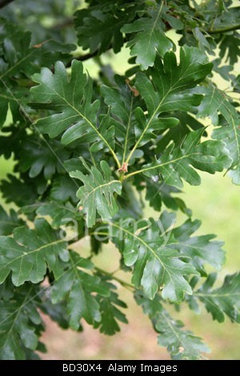
cumulus_nimbus
Original Author8 years agoand here's Quercus Boissieri / Quercus infectoria
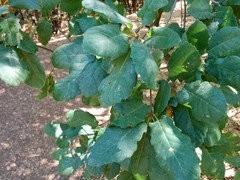
I did a graft with this one and a European chestnut but both plats died from than unknown syndrom...






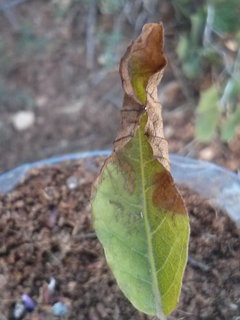
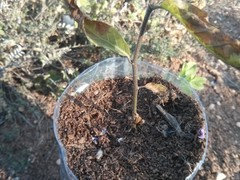



jocelynpei